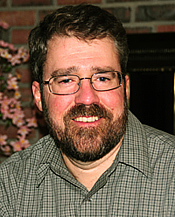Creating Your Own Sun

When shooting outdoors and moving from bright sunlight into deep shadow—a baseball dugout, during a recent shoot of ours—you may need a little extra illumination to help smooth the transition. With the help of Location Lighting, a 6K ARRISUN HMI PAR, and freelance grip Dan Denitto, we were able to balance our exposure while shooting in this scenario.
As an exercise in a cinematography class at DeSales University, instructor Ray Hoover invited both Dan and Location Lighting to assist on the shoot. Funded by the Baker Foundation, DeSales often has the opportunity to have leading industry professionals teach students valuable skills outside of the classroom.
JUST ENOUGH LIGHT
The day in question was cold, partly sunny and extremely windy. The ARRISUN was raised to a height of 9 feet and powered by a 12,000-watt Honda generator. An instrument of this weight needs to be sand bagged and the wheels locked to prevent any movement. Because of the wind, it was also helpful to have someone stationed by the light in the event a problem might arise.
To warm up the color temperature of the daylight-balanced ARRISUN (approximately 5600 degrees K), a frame of 1/4 color temperature orange (CTO) gel was placed in front of the source, as was a frame of 216 diffusion. This slightly warmed up and softened the punch of the lamp without baking any shadows against the wall of the dugout.
The action involved two actors walking toward the dugout, with one then taking a seat inside. We were not trying to match the sun, only raise the illumination enough so that the move from bright daylight into shadow would not force us to open the iris in mid-shot. It would not be believable if the dugout were as bright as the playing field—even though the ARRI could accomplish this feat. At 2 p.m. on our November shoot day, the sun created a backlight on the talent, the ARRI provided the key in the dugout, and extra reflectors bounced natural illumination into the right spots along the actor's route.
PACKS A PUNCH
The ARRI has so much punch that it needed to be diffused, even outdoors. The 216 and 1/4 CTO helped the cause while adding a soft late-fall warmth to the characters. When the sun moved behind the clouds, our crew would wait until it reappeared, maintaining the balance that had been set.

On-location with a 6K ARRISUN In our run-through, the ARRI was still too bright, so one of the glass diffusers was placed on the unit as well. As Dan and Ray instructed the students to set up the ARRI and diffusion, they asked them why this was necessary. Explaining the reason behind something is a better learning tool than just telling someone to do it. If the ARRI was to be moved back 10 feet, what would that accomplish and what is the correct way to move an illuminated source safely?
Before the CTO was added, why did the character look so cold (blue)? Experimenting with different strengths of CTO, full CTO was far too warm but 1/4 had just the right touch. These subtleties are sometimes better seen on the field monitor than by the naked eye. A student "manned" each diffusion frame as it was set up to help maneuver it if necessary, preventing the wind from making it a sail, and securing it with a sandbag.
THE SAME RULES APPLY
On-location crew etiquette was also discussed. For instance, if the DP requests something, how do you approach him or her with a suggestion or question? Knowing this practical information is critical on any set so everyone can function effectively as a team.
The 6K ARRISUN was selected because it was bright enough to handle the situation—their smaller 4K would have been not enough. Some people may be afraid of using sources this powerful because they appear to be more difficult to control, but, with some hands-on experience, one quickly learns that the same basic lighting rules and techniques apply to using even the largest fixtures. And it's always easier to reduce the output of a larger lamp than contend with an underpowered unit.
Chuck Gloman is program director of the TV/Film Department as well as a member of the faculty of DeSales University. He may be reached atchuck.gloman@desales.edu.
The professional video industry's #1 source for news, trends and product and tech information. Sign up below.
Chuck Gloman is Associate Professor with the TV/Film Department at DeSales University.

